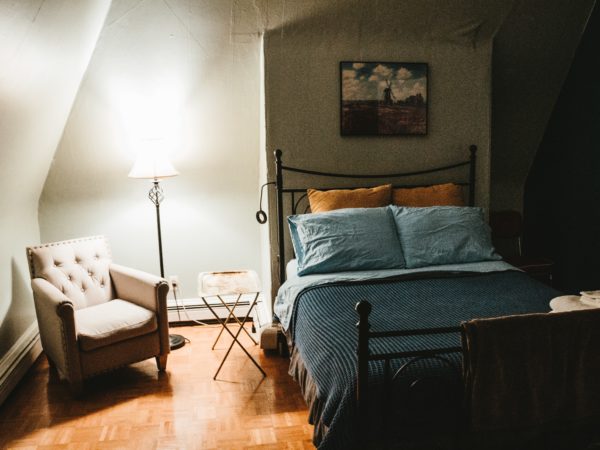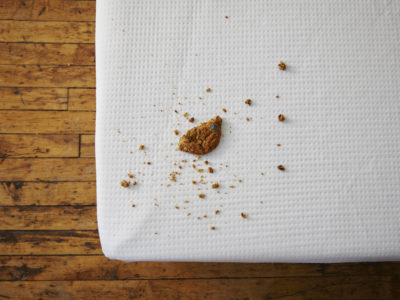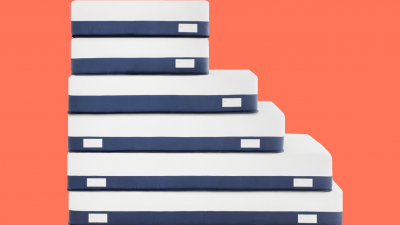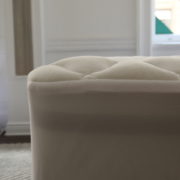Even if you clean your bedding compulsively, you’re probably not thinking about cleaning your mattress as much as you should be.
Mattresses often appear clean, even though a lot may be going on that you can’t necessarily see. You can literally see animal hair accumulating on the couch, you wipe down your counters every night, you scrub the shower.
But if you’re honest with yourself, how often do you look for signs that your mattress needs cleaning?
The Helix Sleep team understands the importance of a clean mattress for a deeper sleep. We’re going to show you how to clean a mattress, walk you through the filthy mattress warning signs and provide some information on consistent mattress care.
How To Clean a Mattress
- Wash your bedding and pillows frequently.
- Vacuum the mattress regularly to remove dead skin cells and allergens.
- Remove stains from the surface of the mattress.
- Use products to curb odors.
- Don’t let stains sit on the upholstery.
- Let your bed air out before making it each day.
- Open some windows and let sunlight in.
- Most importantly – Cover your bed with a mattress protector.
7 Signs Your Mattress is Dirty
Telltale signs your mattress is dirty include:
- It just feels grimy. This feeling is unmistakable.
- There are visible stains.
- You notice musty odors.
- Dust mites are always around (this can be dead skin).
- You’ve seen bed bugs.
- You react to unseen allergens.
- There’s mildew or actual mold on the bed or in the room.
Of course, you can’t always see when your mattress is dirty. Things like heightened allergy responses, mildew anywhere in the room, and a bit of a musty odor are all indicators that it’s time to clean your mattress.
Stains or the presence of bugs can also indicate an issue—and you’ll need to clean or get rid of your mattress ASAP.
How Often Should I Clean My Mattress?
You should clean your mattress once every two months. But the best policy for mattress cleaning is preventative steps.
You should wash your bedding at least once a week and vacuum about as frequently. Wiping down your bed frame is another task you should complete weekly.
Deep cleaning of the entire mattress is beneficial if you notice stains or odors. Every couple of months is an ideal timeline for deep cleaning. You’ll also want to wash your waterproof mattress protector, pillowcases, mattress pad, and mattress topper each time you wash your sheets to prevent the buildup of dead skin cells, dust and pests.
How Can I Get Rid of Mattress Stains?
Stains can come from children, pets, or your sleep habits. After all, sweat and body odor are leading causes of mattress grime. And of course, some people prefer to eat and drink in bed, too, which leads to other stain issues.
Here’s how to clean your mattress after it becomes stained
- Blot up any liquids on the mattress surface.
- Use a stain remover for set-in stains on bedding and mattress toppers.
- Try a sprinkle of baking soda for odors and stains (you can also do this across the entire mattress).
- Dab hydrogen peroxide on difficult spots.
- Try a dish or laundry detergent cleaning solution to remove stains.
Removing any liquids from the mattress surface is a smart first step. Then remove all bedding, as applicable, and use your washing machine to cleanse sheets, toppers, and mattress protectors.
Sprinkle baking soda on the bare mattress to soak up odors and stains. Let it sit, then vacuum away any remaining powder. For tougher stains, dab hydrogen peroxide on the surface with a damp cloth—but don’t pour it directly on the spot. You can also find mattress cleaner products on store shelves.
For bodily fluids or other difficult stains, try a cleaning solution of dish detergent or laundry soap. Liquid dish soap cuts grease while laundry detergent specifically addresses household stains and body oils and fluid. Try mixing your desired product with water and blotting your mattress with the mixture.
How Can I Get Out Stubborn, Set-in Stains?
Some stains are more complicated than others—such as urine stains, blood stains, and bodily fluids. Fortunately, spot cleaning with a small amount of bleach usually addresses lingering stains. Be sure to only apply a bleach mixture to the affected area—not the entire surface—and handle the product carefully.
Should I Use a Stain Remover or a DIY Cleaning Solution?
Many commercial stain removers can help remove stains from mattresses. However, you need to use powerful enzyme cleaner products carefully. Before resorting to heavy-duty measures, learn how to clean mattresses with DIY methods—like a spray bottle with a mixture of warm water and dish soap or laundry detergent.
Avoid using hot water, as that will set in stains, while cold water may require extra scrubbing. Depending on the stain, even a cleaning solution like lemon juice or white vinegar can help lift unsightly marks and remove odors, too.
How Can I Deodorize a Mattress?
Smells are often the worst part of a dirty mattress because you can’t cover them up. But deodorizing goes beyond spraying a pleasantly scented mixture into the room.
Here’s how to clean a mattress with odors via DIY methods
- Allow fresh air into the room whenever possible.
- Sprinkle baking soda on the mattress and let it sit.
- Consider mixing essential oils into the baking soda for extra odor-fighting power.
- Use a handheld vacuum or your standard vacuum cleaner (or an upholstery attachment) to suck up the excess baking soda.
- Spray a room deodorizer in the room to combat non-surface-based odors.
Cracking a window can often help evaporate troublesome odors from your bedroom. But the best way to clean a mattress that is emanating odors is to use baking soda. Baking soda absorbs the offensive odor and leaves a fresh, clean scent behind once you vacuum up the powder.
Adding essential oil blends—such as relaxing lavender or antimicrobial tea tree oil—can also help cut odors. You may also find that you rest easier with the soothing scent of lavender close to you. Of course, removing all the banking soda is necessary so that you don’t wind up sleeping on the powder.
A Clean Mattress for Healthier, More Restful Sleep
Ready to learn more about how a clean mattress contributes to more restful sleep? Beyond learning how to clean a mattress, there are other steps you can take toward better rest.
Check out the Helix Sleep Guide, and, especially if you’re in the market for a new mattress, take the Helix Sleep Quiz to find out which mattress type is the perfect fit for you.
















